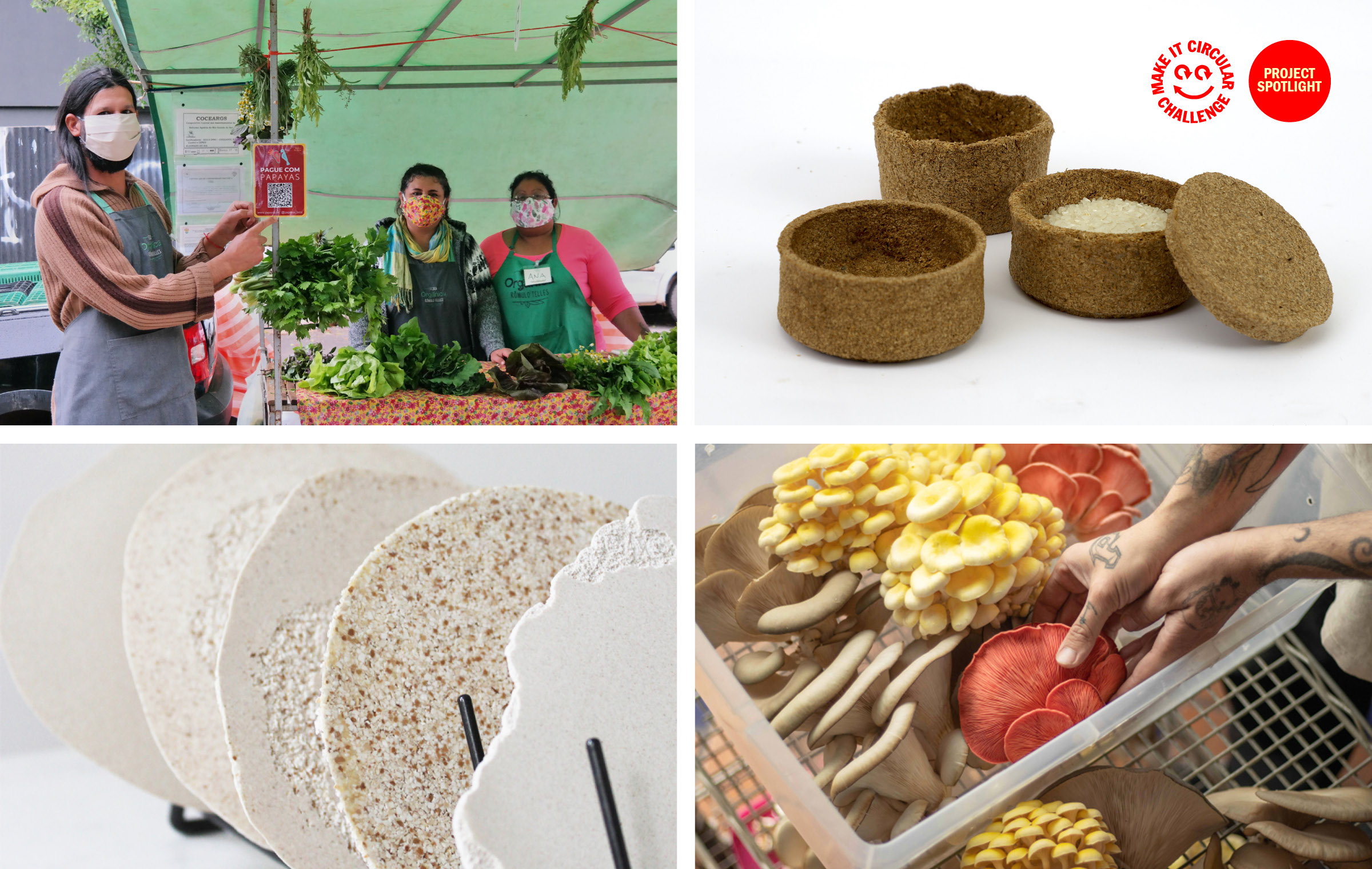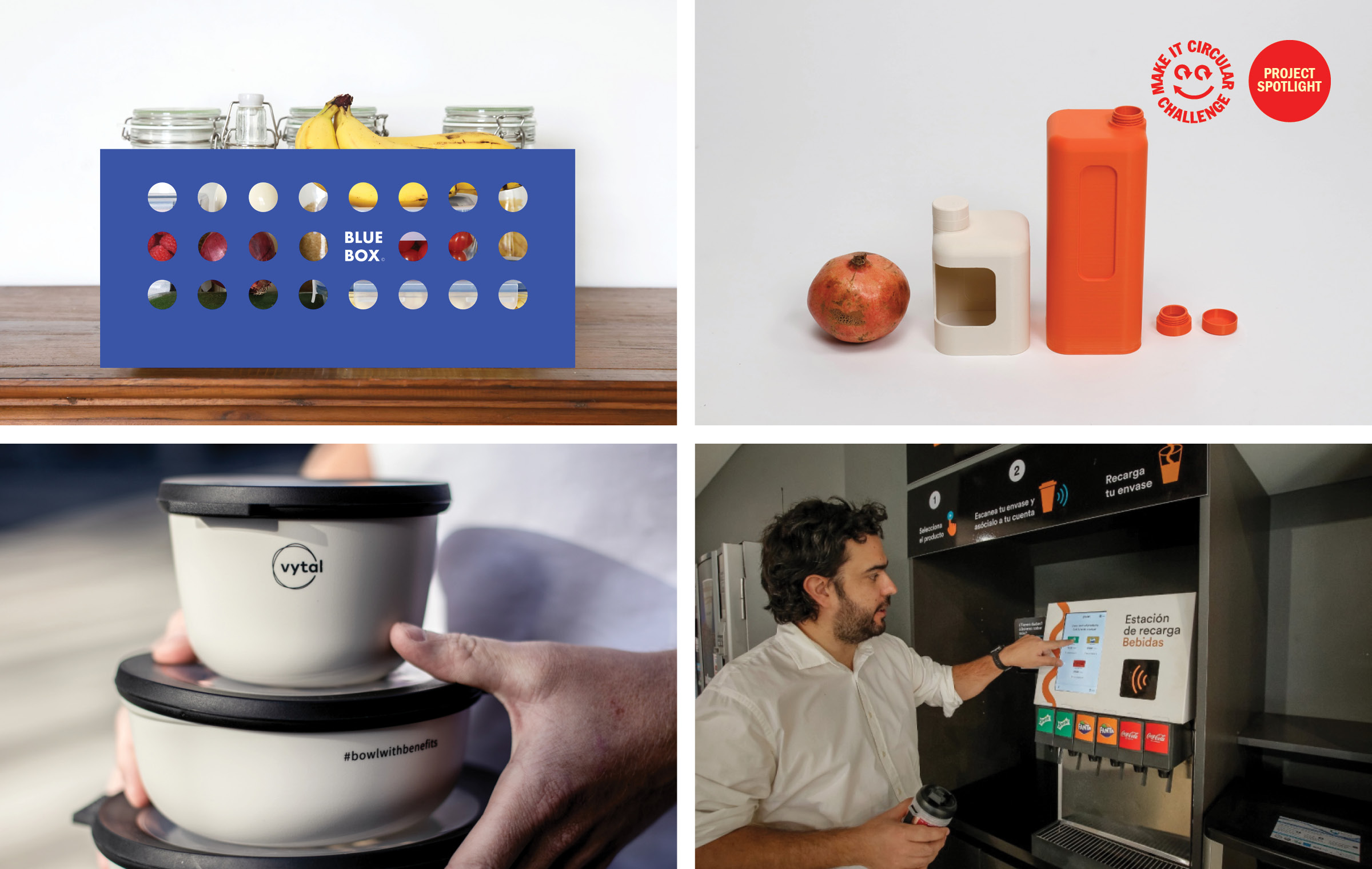When we launched the Make it Circular Challenge last October, we asked creative entrepreneurs worldwide to show us the best that circular design has to offer. The open call ended after three months with a total of 657 projects delivered by applicants in 81 countries. The mix includes a huge range of ideas and start-ups, from unconventional new materials and crafts, to innovative services and community-led campaigns.
By the end of this month, we’ll find out which 50 projects will officially make it to the next round of the competition. In the meantime, it’s been a pleasure getting to know the stories behind this year’s entries and seeing how different contexts produce different visions on circularity. Because even if the problems we face are interconnected, when it comes to tackling issues like waste, we find that the best solutions are often locally-rooted.
Learning how circular initiatives from Brazil relate to those we’ve received from India, Kenya or Japan helps to reveal the kinds of issues that are capturing the imagination of these creative communities. For example: How do linear ways of living manifest in different cultures or parts of the world? And when it comes to accelerating the transition, where are the low-hanging fruits? Where are bottlenecks? Below are a few trends and observations we’ve seen so far.
RETHINKING AGRICULTURE
Learning to work with nature has always been a key aspect of circular design, but this year’s entries seem to be especially focused on exploring how it could change the way we grow our food. Many designers are collaborating with a new generation of farmers who are looking to feed us while regenerating the soil and giving something back to the community. This is most visible in the entries we received from Central and South America, where organic waste is an urgent and growing problem. There are those that use design as a way to build more resourceful and resilient communities, like Regenerating Brazil’s Farms (BR) and Papayas (BR). Some use it as a way to introduce innovative practices to farming and gardening, like Agropelo (CL) and Habitual (MX). A great many others — from both within and beyond the region — focus on finding new uses for agricultural waste, like Mondo (MX), Eggshell Ceramics (NL), Re-Born (DE) and Of Rice For Rice (IN).

Clockwise from top: Papayas (BR), Of Rice for Rice (IN), Eggshell Ceramics (NL) and Habitual (MX).
SOLUTIONS FROM THE SEA
While some creatives are learning to toil the land, many are also turning to the sea for inspiration. This approach seems to be gaining traction all over the world, thanks to the emerging field of biodesign and the growing popularity of marine materials like seaweed. Many of these projects, like Seagrass for Building (DE) and Nakedpak (IL), for example, are using algae to create new materials that are biodegradable and renewable. Some are exploring creative ways to process seafood waste streams, like Ky To San (GB), or ocean plastics, like Aula Sostible do Freixo (SP). There are also more experimental projects like Resting Reef (UK), Ocean Waste (DE) and Continuum (GB), which use the sea and its treasures — from oyster shells to spirulina — to address issues related to circularity, like pollution and biodiversity loss.

Clockwise from top: Seagrass for Building (DE), Continuum (GB), Ocean Waste (DE) and Ky To San (GB).
A TEXTILE EMERGENCY
Another recurring theme amongst the entries is the desire to address the throwaway culture around fast-fashion, and reduce the enormous social and environmental impact of textile waste. Resale and repair platforms abound, especially in countries with high levels of consumption. Examples include services like Cyclothe (SE), Refa (NL) and Re:Patch (DE). Sprinkled between these are material interventions that aim to make fashion production more sustainable, like Maqui (CL) with their bio-based leather or Boro Atelier (NL) with their vegetable pigments. In other places like parts of Africa and Asia, where communities are bearing the brunt of the textile waste trade, creatives are more focused on strategies like recovery and upcycling. You can see this in projects like Transformables (NG), Re-Cover (IN) and Africa Collect Textiles (KE).

Clockwise from top: Cyclothe (SE), Re:patch (DE), Maqui (CL) and Transformables (NG).
BORROW, DON’T BUY
Lastly, many of the entries we received are built on the idea of a sharing economy: one which explores more collective (rather than individual) modes of ownership. This made up a large portion of the digital apps we saw, from rental services to second-hand trading platforms like Donkafele (SN), Swap 10 (IR) and Rebrick (UK). This is also where packaging start-ups take centre stage, from reusable systems like Blue Box (NL), Vytal (MX) and Recan (DE) to refill initiatives like Algramo (CL) and Bare Necessities (IN). Together these projects suggest that consumers are interested in taking a more active role in the production, distribution and trade of the goods they use. It also tells us that systems thinking is becoming more and more important in circular design, with an increasing number of practitioners focusing less on making products and more on building connections between different value chains, industries and processes.

Clockwise from top: Blue Box (NL), Recan (DE), Vytal (MX) and Algramo (CL).
Nominees coming soon
The Make it Circular Challenge Selection Committee has until 30 March to finish reviewing all projects and come up with a shortlist of 50 nominees. Afterwards, an international jury will decide on 13 winners worldwide, according to the five main Challenge criteria: Impact, Design, Feasibility, Scalability and Teamwork. Each winning team will receive a prize fund of €10.000 to invest into their ideas and creative enterprises. Want to see more? All (public) entries are now available for viewing on the Make it Circular Challenge project gallery.
Top image: Agropelo (CL).
